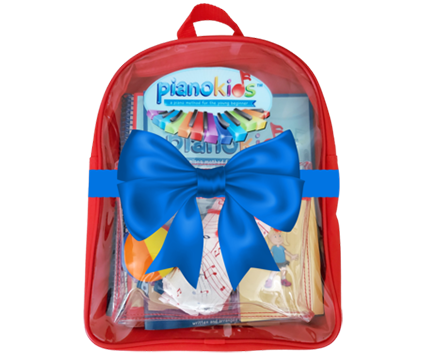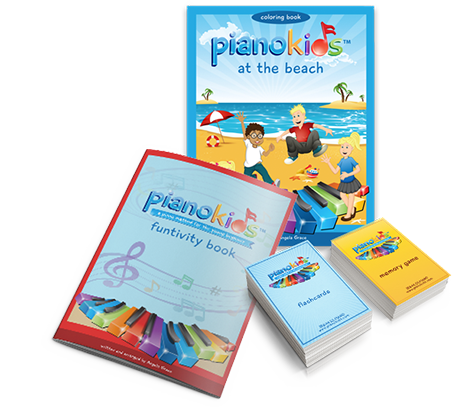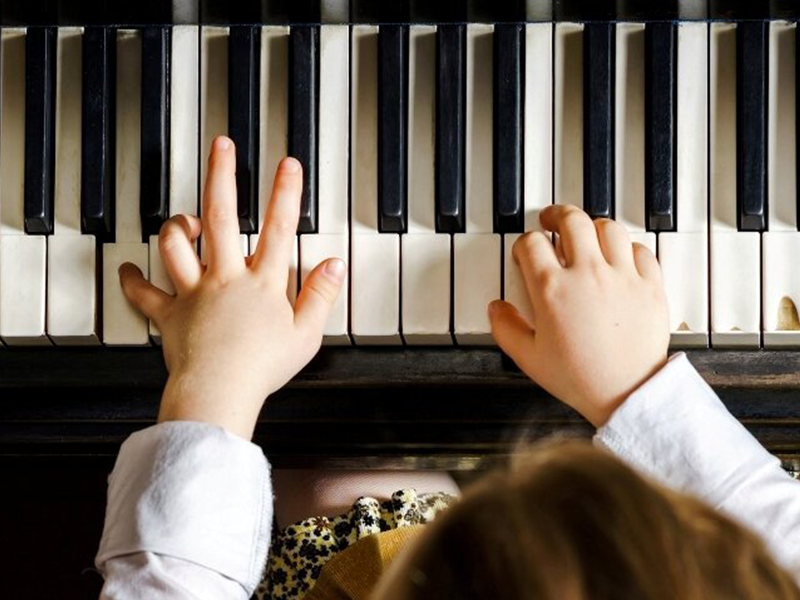Piano Lessons for Kids | How to Play Keyboard for Beginners!
You’ve got an active and amazing pre-schooler, full of energy and inquisitiveness, who needs constructive activities to channel that endless exuberance. Could they be ready for piano lessons?
Some sources say that children are not able to start keyboard instruction before five years old, or before they can tie their own shoes (that’s hard!), and others that tell you to start when they’re toddlers. Who’s right?
The fact is that kids are different, and will be ready or show interest at different times. However, almost all children naturally enjoy sounds and musical toys without anyone prodding them to do so.
Most children can start piano in their third year, as long as lessons are kept short, active, and fun. Teaching methods and expectations just need to be adjusted to this age group, as the abilities of three to five-year-olds are different from school-age children. When handled appropriately, a three or four-year-old can get fantastic results from keyboard lessons, and scientific studies back this up.
The Pianokids program empowers your child to get to know the keyboard and play at their own level.
First Piano Lessons | How to Teach a Child to Play the Piano
Here’s a short checklist to see if your child is ready to start Pianokids online piano lessons for kids, and simple skills to work on in preparation.
Does your child enjoy music? Let them listen to music during the day. Youngsters love everything from happy kids’ songs to classical symphonies!
Do they know their ABC’s, especially the first seven letters from A to G that are used in music? If not, it’s easy to help them learn!
Can they count from one to five? This is important because we use our five fingers to play the keyboard.
Can your kiddo follow simple instructions? They need to be able to understand and follow basic instructions during lessons.
Can your little one pay attention for half an hour? If so, wow, they’re exceptional! If not, they are like most kids. That’s why our lessons average 15-20 minutes in length, broken down into shorter segments, and alternating on-piano and off-piano activities. You can be the one to gauge your child’s attention span, and it’s no problem to stop at the end of a segment if they’re losing focus.
First Piano Lessons | Learn Piano at Home with Pianokids Online
The Pianokids program empowers you, the parent or dedicated adult, to supervise and teach your child how to play the keyboard. It doesn’t matter whether you already know how to play. Hey—you’ve got this! If a three-year-old can do it, you can too!
The fact that the lessons are short, and broken down into even smaller segments for variety and fun, is one of the reasons that learning at home is the ideal setting for young children. Giving your child 20 minutes of quality time four days a week for their keyboard lessons will reap results. Within a few months, kids will be able to play songs like “Three Blind Mice” and “Row, Row, Row Your Boat” all by themselves!
Piano Games for Kids | How to Make Piano Lessons Fun
We’ll set you up with all the lessons, materials, and activities you need to keep things lively, never boring, and to move your child from just “playing on the keys,” to playing for real! The “Funtivity” Book, with flashcards, stories, tracing, drawing, and coloring all serve to support what the child is learning on the keys. Kids tick off their completed lessons with stickers on their own music calendars, and receive prizes in the mail after reaching benchmarks to keep them motivated.
Piano Games Online Using the Keyboard
Learning to play the keyboard has never been this exciting! The Pianokids program offers a treasure chest of resources, including keyboard games, a practice record with pop-up surprises, video lessons, and a virtual online piano teacher! See more about our curriculum here.
Best Keyboard for Beginners | Best Piano for Kids
There are many keyboard options according to your personal preference and living space, from a full-size acoustic piano to an upright digital model, to a tabletop keyboard, with pros and cons for each. If your budget is limited, you can find good quality brand-name keyboards on resale websites like Craigslist for as low as $150.
Most experts recommend that you choose something with good sound quality and weighted keys— keys that feel and play like real acoustic piano keys. If you don’t want a full-size 88-key model due to space or budget constraints, find a happy medium, and don’t go too small or too cheap. Having a lot of keys is one of the things that makes playing piano fun for kids. And they will need those keys in the future as they progress. Choose an instrument with good sound quality to develop their ear correctly for music and tones.
Subscribe today!
Have questions? Click here for a quick online response, or call us at 844.557.4266








